The herbaceous perennial plant strawberry (Fragaria) is a member of the rose family. This genus combines species that are found only in the wild - plain, eastern and meadow strawberries; cultural (not growing in natural conditions) - garden strawberry and pineapple; and also those species that can be found both in nature and in culture - nutmeg and forest strawberries. The name strawberry comes from the word "strawberry", which means a berry that grows very close to the ground. The first such culture was described by I. Bock, who was the caretaker of the botanical garden in Zweibruecken, and this happened in 1553. There is an opinion that the appearance of such a plant occurred in the Tertiary period in East Asia, after which the spread of strawberries across Eurasia and America was observed. Below we will talk about one of the widows of strawberries, namely, about large-fruited strawberries, either garden or pineapple. This species was the result of crossing Virginia strawberries and Chilean strawberries. Today, this species has more than 10 thousand different varieties.
Content
Features of garden strawberries
The fibrous, branched root system of strawberries is well developed. Large trifoliate leaf plates are green in color, they are located on petioles, which reach about 25 centimeters in length. At the ground part of the bush, there are 3 types of shoots:
- Horns... These are annual shortened shoots with an apical bud, which is called a heart. The horns also have axillary lateral buds and a rosette, which consists of several leaf plates.
- Mustache... They are annual creeping stems, which are organs of vegetative reproduction. Their appearance is observed at a time when the flowering of the bushes ends.
- Peduncles... They emerge in April from generative buds.
Bisexual five-petal flowers of white color are collected in multi-flowered corymbose inflorescences. There are varieties of this culture with stems below the peduncles. The fruit of such a plant, which everyone calls a berry, is actually an overgrown receptacle. Moreover, on its surface there are small pale brown nuts, which are the real fruits of such a plant. Berries can be painted in a variety of shades of red. There are varieties with pink or white berries, the color of the pulp in which is light red or white. It is recommended to cultivate strawberries without transplanting in the same place for no more than 4-5 years. Only black currant berries contain more vitamin C than strawberries. Moreover, the amount of folic acid in the berries of such a plant is much higher than that of raspberries or grapes. And compared to pineapples or apples, strawberries contain 4 times more iron.
Planting strawberries in open ground
What time to plant
Planting strawberries in open soil can be done throughout the growing season. However, experienced gardeners advise doing this at the beginning of autumn or spring, or in the last summer weeks. In the event that you start planting strawberries in the last days of August or in the first days of September, the bushes will have time to take root very well before the first frosts and will begin to bear fruit next season. In regions with very cold and little snowy winters, it is recommended to plant such a culture in the spring, immediately after the soil warms up.
A site suitable for such a plant should be well consecrated. It is impossible to plant strawberries in those areas where cabbage, potatoes or cucumbers previously grew. Also, plots where peppers, tomatoes, eggplants and other representatives of nightshades were grown last year are not suitable for growing this crop. It is not recommended to plant strawberries next to raspberries.
Soil for strawberries
Almost any soil for planting strawberries is suitable. If you provide it with proper care, then this plant will be able to grow on any soil, however, excessively dry sandy soil and a swampy area for such a culture is not suitable. Best of all, strawberries will grow on slightly acidic sandy loam or light loamy soil, while it should be fertile, moist and breathable. For planting, you should not choose areas where there is stagnation of melt or rainwater. It is also recommended that the groundwater is deeper than 0.7–0.8 m. The acidity of the soil should be 4.5–5.5. Experienced gardeners recommend choosing for planting strawberries those areas where legumes, onions, garlic, marigolds, lupines, oats, rye, peas, beets, carrots, radishes, radishes, parsley and dill were grown. If cucumbers, cruciferous or nightshades grew on the site, then it will not be suitable for planting this culture.
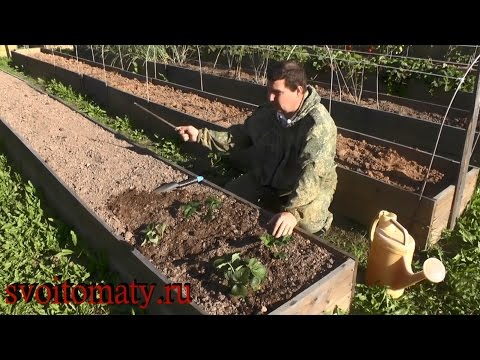

Watch this video on YouTube
Planting strawberries in spring
If the planting of strawberries is planned for the spring, then it will be necessary to prepare a site for it in the autumn. To do this, you need to dig the site with a pitchfork to a depth of 0.25–0.3 m, while removing all the roots of weeds from the ground, and also add 5 kilograms of peat, compost or rotted manure per 1 square meter. Also, complete mineral fertilizer should be applied to the soil, so, for 1 square meter of the site, 20 grams of potassium sulfate, 40 grams of double superphosphate and 5 kilograms of wood ash are taken. If planting strawberries is planned in spring, then organic fertilizers should be applied to the soil in autumn, and mineral fertilizers - in spring. In the event that the soil on the site is rich in nutrients, then fertilization is not required.
Planting of small-fruited varieties is carried out according to the scheme of 20x30 centimeters. If large-fruited varieties are planted, then the distance between the bushes in a row is observed from 0.2 to 0.3 m, while between rows should be left from 0.7 to 0.8 m.Using a hoe, it is necessary to make holes, while they the depth should be from 0.25 to 0.3 m, and the width should be about 0.2 m. Pour 1 liter of water into each finished hole, and without waiting for it to be absorbed, place a bush in it. Then the hole is filled with soil, which compresses a little. The root neck of the bush should be at the same level with the site, but it is imperative to make sure that the heart is not buried in the ground, otherwise the strawberries will rot and begin to rot. In the event that the plant is buried at a shallow depth, this can lead to its death due to drying out of the root system. When the strawberries are planted, loosen the soil well between the rows.
In the event that a plant is planted in dry soil, before it fully takes root, it will need 2 or 3 more waterings. You need to water every day in the evening. In addition, the first days after planting, the bushes will need protection from direct sunlight.
Planting strawberries in autumn
If you decide to start planting in the autumn, then the preparation of the site for this crop should be done 15-20 days in advance. The site is prepared in the same way as in spring, the only difference is that both mineral and organic fertilizers are immediately applied to the soil. Experienced gardeners in this case recommend taking a half dose of mineral fertilizers. Planting bushes is done in the same way as in spring. When strawberries take root in a new place, the soil surface between the rows must be covered with rotted straw or manure, while the layer thickness can vary from 8 to 10 centimeters. In this case, the strawberry root system will be protected from winter frosts.
Strawberry care
To grow strawberries in open soil, it should be weeded in a timely manner, loosen the soil surface between the rows, huddle, water, feed, cut, process in order to prevent or treat various diseases and pests, and also prepare the site for the coming winter. In some cases, strawberries planted last year are pushed out of the ground by severe frosts in winter, therefore, in spring, it will be necessary to sprinkle the roots with soil, which is trampled down a little, and this should be done as soon as possible. After that, it is recommended to loosen the soil surface between the rows and around the bushes. It is necessary to remove the weed immediately after its appearance, and if a crust has formed on the surface of the soil, then it should be loosened. Throughout the growing season, loosen the soil surface between the rows about 7 or 8 times, and near the bushes - at least 5 times. To significantly simplify the care of this garden crop, the surface of the site must be covered with a layer of mulch (foliage fallen from trees, rotted straw, reeds or peat). Thanks to mulching, a crust does not appear on the soil, and the number of weeds is noticeably reduced. If a plant has been grown in the same place for more than 5 years, then experts recommend that it be sure to transplant it to a new place.
Strawberries during flowering
The plant will bloom 7-15 days after the flower arrow appears, or 3.5-4 weeks after the beginning of the growing season. Only one inflorescence grows from one heart, while each scutellum contains 5–27 flowers. 1 flower can live for 4–6 days, while the total flowering time of the entire garden bed can be up to 20 days, and this directly depends on air humidity, daylight hours, plant variety, temperature, light intensity and the availability of nutrients.During flowering, such a crop does not need to be looked after in a special way. Such a plant begins to bear fruit 4 weeks after the beginning of flowering.
Watering strawberries
Strawberries need to be watered in a timely manner and correctly, because they are among the moisture-loving plants. It is best to water it with artificial sprinkling. Some gardeners also make deep enough (about 12 centimeters) furrows in the center of the row spacing. Then water must be poured into these furrows. When the liquid is absorbed into the soil, the grooves should be repaired, and the surface of the site should also be loosened. In the event that watering is done from a watering can, the divider must be removed, and then the water must be carefully poured directly under the roots of the plant, while trying to keep the liquid on the surface of the foliage. The temperature of the water used for irrigation and the air temperature must be the same. It is noticed that if water is passed through a magnet, this will increase the number and size of the fruits. In order to understand whether such a plant needs watering, it is necessary to check the soil moisture at a depth of 0.2–0.3 m. Strawberries need to be watered if the soil at this depth crumbles in hands. During intensive growth, the bushes, as a rule, are watered once every 1–1.5 weeks. During the period of fruit pouring, watering should be done with a frequency of 1 time in 5 days. During rains, the frequency of watering depends entirely on the condition of the soil.
Feeding strawberries
To improve the growth of strawberries and increase its yield, such a plant must be systematically fed. For feeding, it is recommended to take mineral and organic fertilizers such as wood ash, bird droppings or humus. For the first time in a season, the plant must be fed immediately after the snow cover has melted in the spring, for this, 1 to 2 liters of a complex mineral fertilizer solution is poured under 1 young bush, and from 2 to 5 liters is taken for 1 adult bush.
The second time the plants are fed during the formation of peduncles. A solution of bird droppings (1:20) and mullein (1: 6) must be fermented for 7 days. Then 1 bucket of the finished solution is mixed with ½ tbsp. wood ash. The dosage for this formula is exactly the same as for the first feeding.
Another feeding is carried out after the beginning of flowering, while using the same nutrient solution as in the second feeding, however, when preparing it, the mullein is bred in a ratio of 1: 8.
In the second half of August, the strawberries have buds for the next year. During this period, it is impossible to feed the plant with nitrogen, otherwise the bushes may start to grow. For 1 bucket of water, take 50 grams of the daily extract of superphosphate, and then pour ½ tbsp into the mixture. wood ash. Remember that in all nutrient solutions, in no case should there be chlorine, because the plant reacts to it extremely negatively.
Before feeding the strawberries, it is necessary to water the site, while the hearts and foliage must remain dry. Repaired strawberries need to be fed more often, because when the first harvest begins to sing, at the same time, the development of flower buds of the future harvest is observed.
What time is the transplant
It is recommended to replant strawberry bushes at least once every 4–5 years. If remontant strawberries are grown, then they should be transplanted once every 2 years. It is recommended to transplant in the autumn, or rather, in September. When replanting, the procedure should be exactly the same as for the initial planting. The bushes must be placed in prepared holes, which are filled with earth, while making sure that the hearts rise above the level of the surface of the site. Before frost, the soil surface between the rows must be covered with a layer of mulch, which will protect the plant root system from freezing.
After harvest
After all the fruits are collected, the strawberries begin to actively grow foliage and mustache. At the same time, there is an accumulation of nutrients necessary for the plant in winter, as well as the formation of new fruit buds. It should be noted that during this period it will be necessary to ensure that the bushes have enough moisture and nutrients.
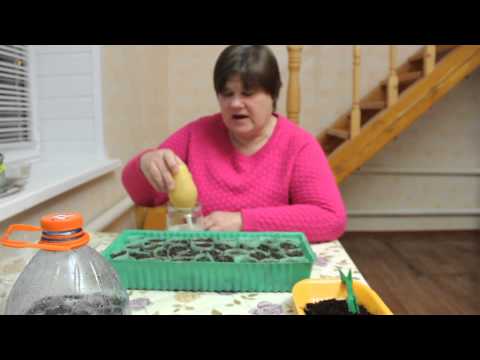

Watch this video on YouTube
Strawberry propagation
For reproduction of most varieties of strawberries, mustaches are used, which are also called rosettes. Mustacheless varieties are propagated by seeds and dividing bushes.
Propagation of strawberries with a mustache
After the bushes stop bearing fruit, the mustache regrowth. During this period, the plants need to be weeded, watered, and also loosened the soil around the bushes. Choose two one- or two-year-old outlets that should be completely healthy and as close to the parent plant as possible. They need to be pressed a little into the ground, and then sprinkled with loose soil, while the heart should not be covered. Wait for the mustache to take root. In September, you need to remove the rooted mustache from the ground and plant it in a new permanent place. Some growers remove the mustache and plant it on the growing beds. At the same time, it is necessary to make a canopy of lutrasil over the garden bed, which will protect the plant from the scorching rays of the sun. It should also be noted that on those mustaches that have roots, 3 or 4 leaf plates should be left, and only 2 leaves on rosettes without roots, in this case, almost all the forces of the plant will be directed to building up the root system. The canopy should be removed half a month after planting the mustache in the garden. In September, a well-rooted mustache should be planted in a permanent place, while taking them along with an earthen lump.
When buying seedlings, you need to remember that a good rosette should have a well-developed horn, long (at least 50 mm) roots, as well as at least three leaf plates.


Watch this video on YouTube
Seed propagation of strawberries
For propagation of small-fruited and large-fruited remontant varieties, seeds are used. Sowing is carried out in March, using compacted, moist compost. The seeds are not buried, but only slightly pressed into the surface. Crops should be covered with foil or glass from above, they are put into the refrigerator's vegetable box, where they should stay for three days. Then the crops are harvested in a warm (18 to 20 degrees) place. The soil should be systematically moistened with a spray bottle. After about 4 weeks, the first shoots should appear. After that, the cover is removed from the container, and it itself is moved to a well-lit cool (14-16 degrees) place. After 7 days, the seedlings are again removed to a warm place with a temperature of 18 to 20 degrees. During the formation of the third or fourth true leaf in the plants, they are picked according to individual peat pots. They are planted in open ground from mid to late May, when return frosts are left behind. However, before planting, the seedlings will need to be hardened.
Propagation of strawberries by dividing the bush
The propagation of musty varieties of strawberries is also carried out by dividing the bush (particularization). This procedure is carried out in spring or when fruiting ends. Dig up developed, powerful bushes, free their root system from the soil. Then, with a sharp knife, divide the bush into several parts, while taking into account that each section should have a horn, at least 3 leaf plates and healthy white roots. Darkened old roots must be trimmed. Then the divisions are landed at a permanent place.
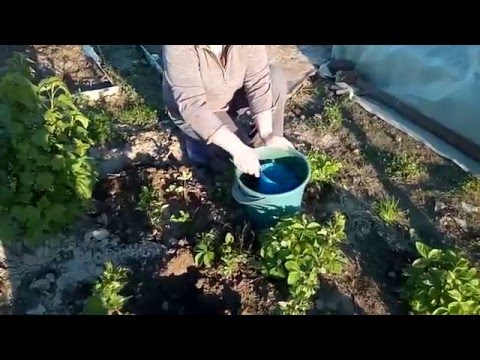

Watch this video on YouTube
Pruning strawberries
What time is the pruning
There are various opinions as to whether strawberries need pruning. Some gardeners are sure that pruning is not needed for this crop, while others are convinced of the opposite. It should be remembered that the leaf plates feed the plant itself, and the more foliage, the more powerful the bush. However, after the fruiting period is over, strawberries begin to prepare for the growth of fruits in the next season, while actively growing rosettes weaken the plant itself, taking away its strength and nutrients, which are so necessary for the bushes to form fruit cells in the next season. As a result, the conclusion suggests itself that it is necessary to cut this culture. However, it should be remembered that the sheet plates are heat insulators, and it is thanks to them that the bushes do not freeze out in winter. Therefore, if you remove all the leaves from the plants, then in winter they will die.
Strawberry is a perennial. She has a gradual drying of the leaf plates, while they are replaced by new leaves. The duration of the replacement cycle for old foliage with new one is approximately 60 days. Trimming the leaf plates is carried out immediately after the main part of the fruit is harvested, this time, as a rule, falls in August. In this case, the bushes will be able to grow new foliage before the onset of the first frost. In the event that the pruning was not carried out on time, then it is better to postpone this procedure for the next year.
How to trim strawberries
You need to cut off the leaves at the very surface of the soil. In this case, pathogenic microorganisms and pests will not be able to settle in their remains. Cut rosettes and foliage can be used to fill the compost pit. However, if they have harmful insects or signs of disease, then it is better to destroy such plant waste.
In the event that the bushes are properly cared for, and they are absolutely healthy, then they will not need frequent pruning. In this case, this procedure is recommended to be carried out once every 2 or 3 years. It should also be noted that pruning young plants can only harm, since it greatly weakens them.
When the bushes are cut, they will need preventive treatment with fungicidal and insecticidal preparations. When young foliage begins to actively grow, then the strawberries will need to be watered, weeded, fed with organic matter and mineral fertilizers in a timely manner, and also loosened the surface of the site.
Strawberries in autumn
In regions with cold winters in late autumn, before the first frost, the area with strawberries must be covered with a continuous layer of mulch (flying foliage or straw manure), while its thickness should be from 5 to 7 centimeters. In this case, the bushes will not freeze, even if the winter period is very cold and with little snow.
In the southern regions, this crop is protected as follows: in the springtime you need to sow sorghum curtains every 4 or 5 rows from east to west. In this case, in the summer, the strawberries will not suffer from the scorching rays of the sun, and in the winter such backstage will help to retain snow, which will protect the plants from freezing, and will also contribute to the accumulation of water in the soil.
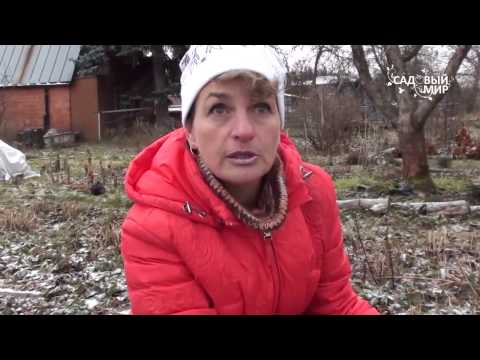

Watch this video on YouTube
Pests and diseases of strawberries with a photo
Strawberry diseases with photo
Garden strawberries have low resistance to a variety of diseases. It should be borne in mind that this culture and strawberries are susceptible to the same diseases. The ones that are most common will be described below.
Fusarium wilting
It contributes to damage to both the roots and the ground part of the strawberry. The affected bushes change color over time, they wither and dry out. The development of ovaries stops, rosettes and leaf plates become dark. Such a fungal disease most often develops in the heat.Its pathogens can be found in weeds, some vegetable crops, as well as in the ground, while this fungus may not die for several years, especially if the remains of plants are not removed from the site. For prevention purposes, one should strictly adhere to the rules of crop rotation and pay special attention to predecessors. At the first signs of a disease, plants should be sprayed with Benorad or Fundazol.
Verticillary wilting
In the event that this disease is not dealt with, then after only 2 or 3 years, about ½ of the strawberry bushes will die. This fungal disease affects the vascular system, mustache, root collar and root system of the plant. Initially, the infected plant "settles", after some time, lodging of its foliage is observed, while leaf plates form in the central part of the bush, as if affected by chlorosis. On the cut of the rhizome, a ring of brown vessels is clearly visible. It often becomes clear that the plant is painful during the formation of the ovaries. The causative agents of such a disease, as a rule, are carried along with the soil, but various vegetables and weeds can also become their carriers. For prevention purposes, the rules of crop rotation should be followed. The affected bushes should be treated with Benorad or Fundazol, while using a drip irrigation system.
Late blight
In a bush affected by late blight, the main root cylinder turns red. The manifestation of the disease is observed at the beginning of the summer period in dry seasons, the plants begin to wilt. At the same time, the lower leaf plates fade first. There is also reddening of the axial cylinder of the root, gradual dying off of the lateral roots. At large roots, the lower part becomes dark, and they acquire an external resemblance to the tail of a rat. The leaves have a red-blue tint, while their premature wilting is observed. Young leaf plates become smaller. The pathogen is in the ground, and it is from there that it can get into the strawberry root system. Then, the growth of the mycelium of the fungus begins in the root wood, while its growth leads to the filling of the conductive tissue with it. In some cases, pathogens enter the soil along with the planting material. For prevention purposes, you should adhere to the rules of crop rotation and carefully choose the planting material. Also, preventive treatment of the site with Trichoderma is recommended, while a drip irrigation system is used. Sick bushes and the surface of the soil near them need to be sprayed with Quadris or Ridomil.
Late blight (leathery) rot
Leathery (late blight) rot damages the fruit of the plant and can destroy 15 to 20 percent of the crop. In some cases, the entire crop is lost. All parts of the plant located above the soil surface are affected by this rot, namely, inflorescences, foliage, buds, berries, tops of shoots and growth points. Fruits on the affected plants acquire a bitter taste, brownish tough specks appear on green berries. Over time, the berries dry out and mummify. On the affected parts of the plant in rainy weather, a dense white coating appears. Shoots become rough and die off. As a rule, the first manifestations of the disease are observed in June, and in July it reaches its maximum development. For prevention purposes, adhere to the rules of crop rotation, plant only healthy seedlings, properly care for the bushes. Affected specimens and the soil under them must be sprayed with Ridomil, Quadris or Metaxil.
Gray rot
The causative agents of Botrytis (gray rot) are ubiquitous. This disease prefers very warm and humid weather. First of all, it affects bushes that have not been transplanted for many years, as well as thickened plantings where there is poor ventilation.If the conditions for the development of Botrytis are favorable, then it will be able to destroy 1/2 of the fruit. The disease affects leaf plates, fruits, ovaries, buds, flowers and stalks. Soft specks of brown color appear on their surface, they become larger over time. Drying and mummification of fruits is observed. Weeping spots appear on the surface of the ovaries and stalks. The plant starts to rot. In the springtime, preventive treatment is carried out with Derosal, Switch, Topsin M or Euparen. When the plant has faded, it should be sprayed again, but only if the summer is damp. Infected specimens should be dug up and destroyed.
Powdery mildew
Initially, in a plant affected by powdery mildew (linen), plaque appears on the seamy surface of the leaves. This disease affects not only foliage, but also rosettes, petioles and fruits. A loose bloom of white color appears on the surface of the affected parts of the plant. Over time, brown necrosis or "tan" on the seamy surface of the leaves form in these places. The whiskers twist, the foliage acquires a chlorotic appearance. The fruits grow underdeveloped, ugly and not juicy, while they have a mushroom smell and taste. Affected bushes need to be sprayed with Fundazol, Switch or Baylon.
Also, strawberries can get sick with white, brown or brown spot, black, white or root rot, anthracnose.
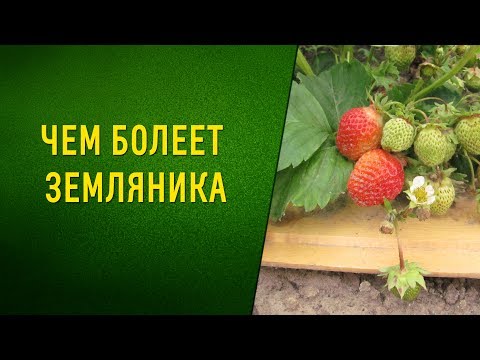

Watch this video on YouTube
Strawberry pests
A fairly large number of pests can harm strawberries. Below, only those that are most common will be described.
Strawberry raspberry weevil
The strawberry-crimson weevil is a small beetle measuring only 0.3 cm in length, which is almost black in color. In winter, it hides in lumps of soil or under a layer of loose leaves. He wakes up in spring and begins to eat strawberry foliage. As a result, holes appear on the sheet plates. Females lay eggs in flower buds. At the same time, 1 individual per season can lay 50-100 eggs, and the hatched larvae damage the buds, which may cause the gardener to be left without a crop.
Nettle weevil
The nettle-leaf weevil has a rich green color and is about 1.2 cm long. This pest figuratively eats the edge of the leaf plates. From the middle to the end of the summer period, the larvae of such a pest damage the root system of the bushes.
To get rid of such pests, you need to spray the bushes with Decis, Confidor, Karbofos or Spark no later than 7 days before the plant blooms, or immediately after the harvest is harvested. As a preventive measure, burn plant residues and loosen the soil surface between rows.
Strawberry mite
The strawberry mite settles on the strawberry leaf plates, which makes them shriveled and their surface looks oily. The fruits become smaller. If the damage is strong, then this can cause the death of the plant. The maximum increase in the number of such pests is observed in August. During the season, they are able to give 4 or 5 generations. For prevention purposes, before planting seedlings, they should be kept in lukewarm water for a quarter of an hour (about 45 degrees). Then the plants are washed in cool water and allowed to dry in a shaded place. Infected bushes at the beginning of the spring period must be sprayed with a solution of colloidal sulfur (60 grams of substance per bucket of water), while about two liters of the mixture are consumed per 1 square meter of the plot. The second time, the plants are sprayed 1.5 weeks before flowering and Neoron's solution is used for this (10 milligrams per bucket of water), at the rate of 1 liter of mixture per 10 square meters.In the event that a tick lives on each bush, then after the harvest is harvested, all the foliage should be cut or mowed and destroyed, then the site is watered abundantly, and mineral fertilizers are applied to the soil. After that, the surface of the site should be treated with a solution of Karbofos (for 1 bucket of water 60 grams of substance).
Stem and strawberry nematodes
Strawberry and stem nematodes are also quite dangerous for strawberries. A stem nematode is a tiny (0.1 cm long) transparent worm that settles in the petioles, shoots and veins of foliage, which leads to their swelling. There is a shortening and curvature of the affected parts of the plant, their wrinkling and cracking, it begins to lag behind in growth and gradually dies. The strawberry nematode settles in the leaf sinuses and buds of the plant. In affected bushes, thickening, shortening and bending of leaf and peduncle petioles are observed. On such bushes, the fruits do not appear at all or look ugly. The nematodes do not tolerate the smell of calendula; therefore, these flowers are recommended to be sown in strawberry beds. Infected bushes are dug up and destroyed. In order to prevent the purchased seedlings, rinse thoroughly with water, while removing all the soil. Then they are kept in brine for a quarter of an hour (10 large spoons for 1 bucket of water). Then the seedlings are rinsed and planted in the soil.
Slugs and snails, red ants, millipedes, leafhoppers, etc. can also settle on strawberry bushes.


Watch this video on YouTube
Strawberry processing
To protect plants from various diseases and pests, it is enough to systematically carry out preventive treatments. Plants need to be sprayed at the beginning of spring and autumn. Before spring treatment, the site must be cleaned of last year's mulch, and all old foliage must be removed and destroyed. For processing, you need to use those products that contain copper, for example: Bordeaux liquid, HOM or Horus. The second time the plants are sprayed for prevention purposes before they bloom, then during intensive leaf growth, then 1 or 2 times at intervals of half a month at the end of flowering. To destroy pests, strawberries are treated with Quadris, Topsin M, Fundazol or another fungicide of a similar action. For prophylactic purposes against pests, the plant is sprayed with Envidor, Aktellik, Calypso or preparations similar in action. The frequency of preventive treatments is significantly influenced by the infectious background of the site. The lower the background, the fewer sprays will be required, and vice versa.
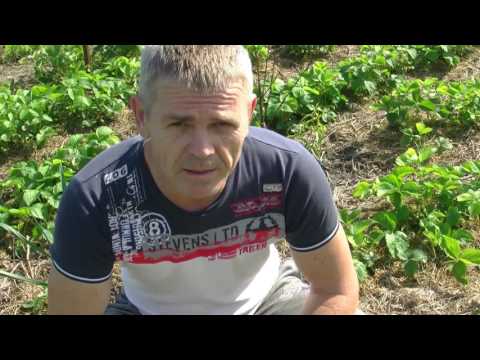

Watch this video on YouTube
Strawberry varieties with photos and descriptions
Before purchasing seedlings or strawberry seedlings, you need to find out which variety suits you best. Although there are a large number of varieties, there is no ideal one. So, one well-known breeder is sure that only that variety can be called ideal, which includes 56 traits, and each of them will suit any gardener. To date, work is underway in this direction.
All varieties of garden strawberries are divided into early, mid-season, late and remontant. If you want fresh berries to be eaten throughout almost the entire season, then on the site it will be enough to plant 5 different varieties with different ripening times.
Early varieties
- Kokinskaya early... The early maturing variety has a high yield and frost resistance. The shape of the large glossy fruits is conical, and their color is dark red. The juicy dense pulp is very tasty.
- Chamomile festivalI am. This Ukrainian variety has a high yield. Intense red large fruits have a round-conical shape. The sweet pulp is dense, fragrant and very tasty.
- Elvira... This variety from Holland is resistant to fungal diseases. Large glossy red fruits are rounded and weigh up to 60 grams. The red dense pulp is fragrant and very sweet.
- Kent... This variety from Canada is resistant to frost, gray mold, powdery mildew and root diseases. Intense red, rounded-conical fruits have a fragrant, dense sweet flesh. Re-fruiting occurs in August or September.
- Heneoye... This ultra-early variety from America is resistant to frost and disease, as well as high yields. It was created for non-black earth regions. Fruits are juicy, large, sweet and fragrant with medium firmness.
Among gardeners, varieties such as Vima Zanta, Deroyal, Camaroza, Lambada, Kimberly, Clery, Hani, Alba, Anita, Early Crimea, Calistemon, etc. are quite popular.
Mid-season varieties
- Lord... This English self-pollinating variety has high yields and resistance to frost and gray mold. The period of ripening and filling of berries is extended. Intense red round-conical fruits have a dense, fragrant sweet pulp.
- Yielding... This large-fruited variety has a high yield and resistance to frost and fungal diseases. The fruits are very tasty and beautiful, they do not shrink until the very end of the collection.
- Venta... This Baltic variety is super elite. It is distinguished by its high yield and winter hardiness, as well as resistance to ticks. Large, beautiful, rounded fruits have a deep red color, which in hot weather changes to dark red.
- Huang... This variety is one of the largest-fruited, winter-hardy and high-yielding, and can also quickly adapt to adverse conditions. Some fruits can be as large as a medium apple. Glossy deep red fruits are round in shape. The reddish firm flesh is very sweet.
- Cambridge Favorite... This variety from England is distinguished by resistance to fungal diseases and yield. Glossy deep red large fruits have an even, regular, rounded-conical shape. The dense reddish pulp is tasty, sweet and sour.
In addition to these varieties, gardeners grow such as: Junia Smides, Holiday, Mashenka, Gigantella, Festivalnaya, Fireworks, Pearl, Crown, Polka, Tago, Suzy, Figaro, Anapolis, Marshal, Darselect, Elsanta, Sultan, Turida, etc.
Late varieties
- Borovitskaya... This self-fertile variety is resistant to frost and disease and high yields. The twinned, dark red fruits are very large and have a groove in the middle. The taste of juicy dense pulp is dessert.
- Wim Tarda... This large-fruited variety from Holland is distinguished by its high yield and resistance to diseases and frost. Glossy very large fruits have a blunt-pointed shape. The dark red pulp is delicious. Fruit shrinkage is not observed until the last harvest.
- Red Gauntlet... The mid-late English variety has a high yield and resistance to disease and frost. Large dark red glossy fruits have a wide conical shape. The dense, deep pink pulp is very fragrant and sweet.
- Vicoda... This Dutch variety is one of the best winter-hardy varieties in this group. It is resistant to stains and white mildew. Dark red dense comb-shaped fruits weigh up to 120 grams and have a high taste.
- Vima Xima... This Dutch variety has appeared relatively recently, forms a small amount of mustache. The dark red large fruits are very sweet and beautiful. The dense, dark red flesh is very firm. The variety is high yielding and disease resistant.
Gardeners also cultivate varieties such as Boheme, Maxim, Symphony, Mize Schindler, Mara de Bois, Chandler, Chamora Turusi, Maestro, Princess Diana, Carnival, Proffusion, as well as varieties with white fruits Pineberry and Anablanca.
Remaining strawberry varieties, or neutral day varieties
- Brighton... The American variety is resistant to fungal diseases and frost. It blooms and bears fruit regardless of the length of daylight hours. It bears fruit continuously for about 10 months. The large red fruits are like varnished. The taste is sweet and sour.
- Crimean remontant... It belongs to the best remontant varieties. Resistant to disease and frost. Fruiting from the last days of May until the very frost. The fruits remain large until the last harvest. When the berry is fully ripe, it has a wild strawberry aroma. The dark red dense fruits are juicy and beautiful.
- Queen Elizabeth II... This variety is considered the best of the remontant. Large, dense fruits are very fragrant. The variety is very popular with gardeners.
- Garland... Recently appeared Russian variety. It blooms and bears fruit continuously, and this is not affected by daylight hours or weather. Firm, large fruits, fragrant and tasty. Often grown in hanging pots or on a trellis.
- A pineapple... The Polish variety is resistant to disease. The first fruiting is observed in mid-May, and the second - in the last days of October. The shape of the orange fruits is cuboid, their weight is about 60 grams. They smell and taste like wild strawberries.
Also the best remontant varieties are: Consul, Felicia, Aisha, Albion, Thelma, Florin, Evie Delight, Sweet Evie, Royal Visit, Autumn fun, Selva, etc.

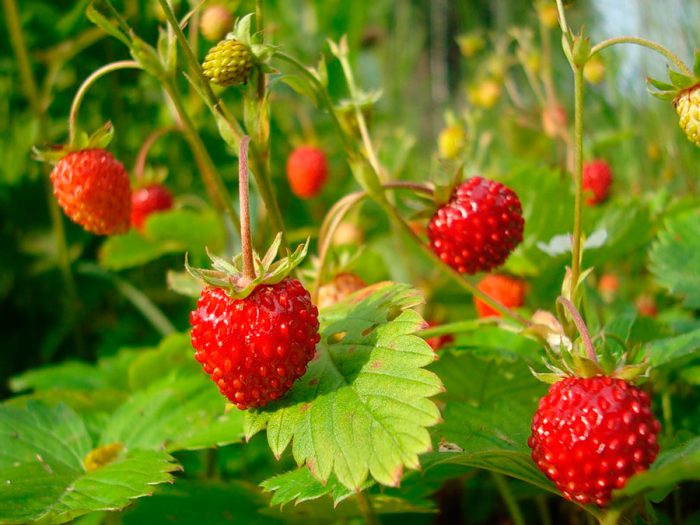
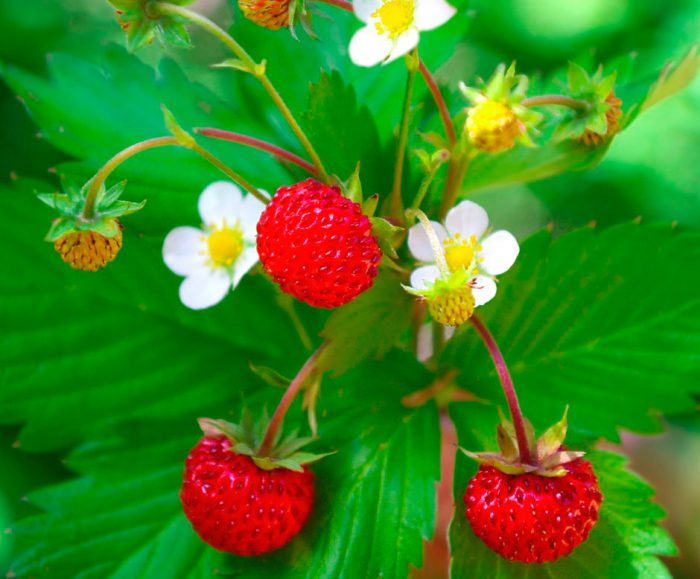
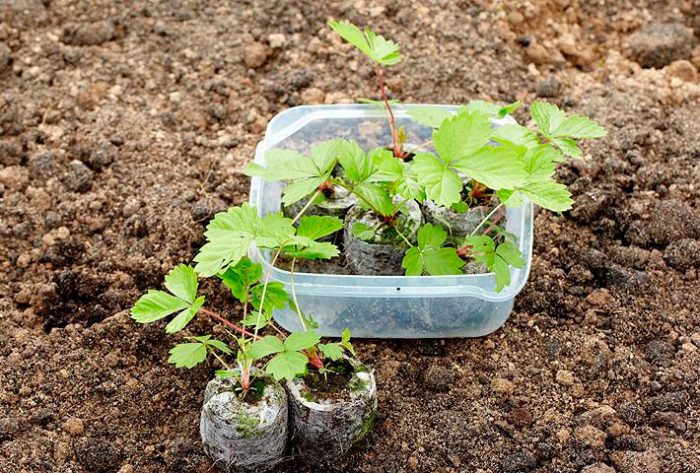
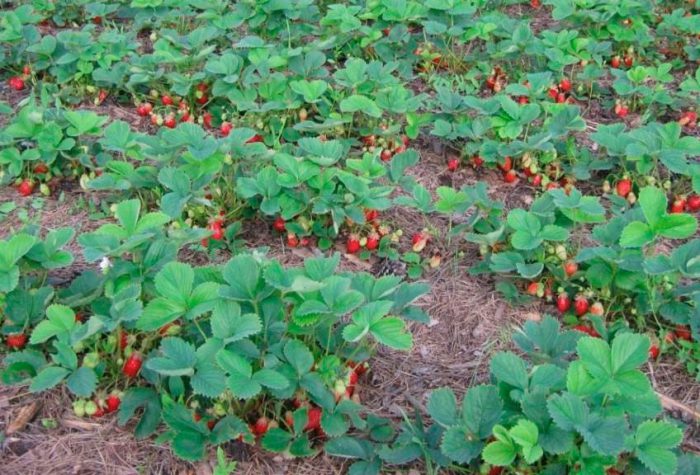


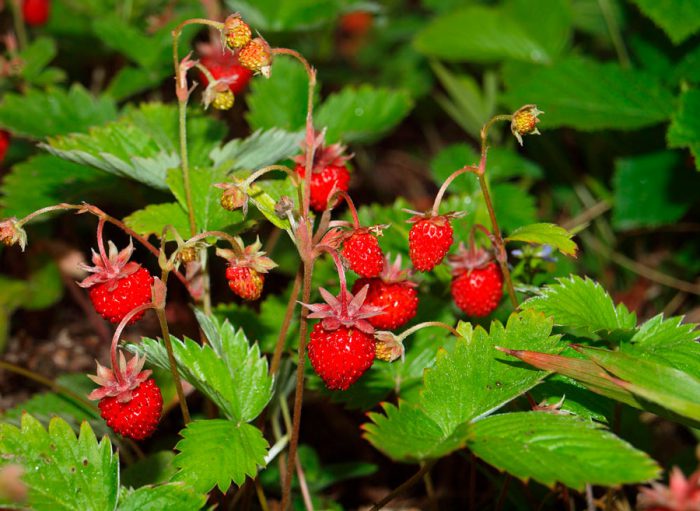
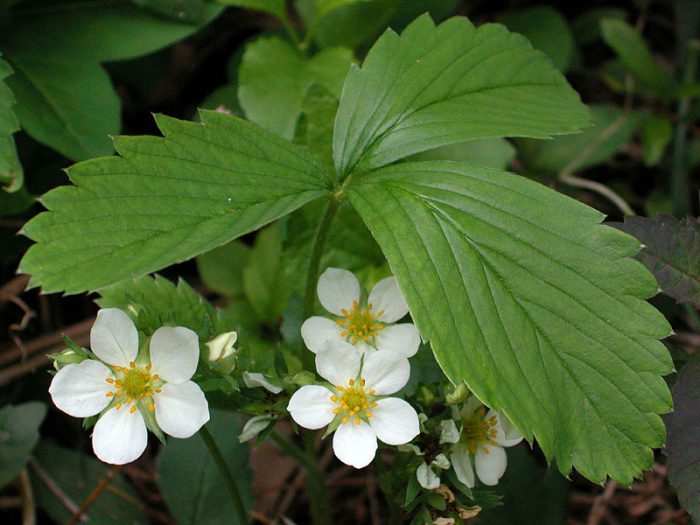

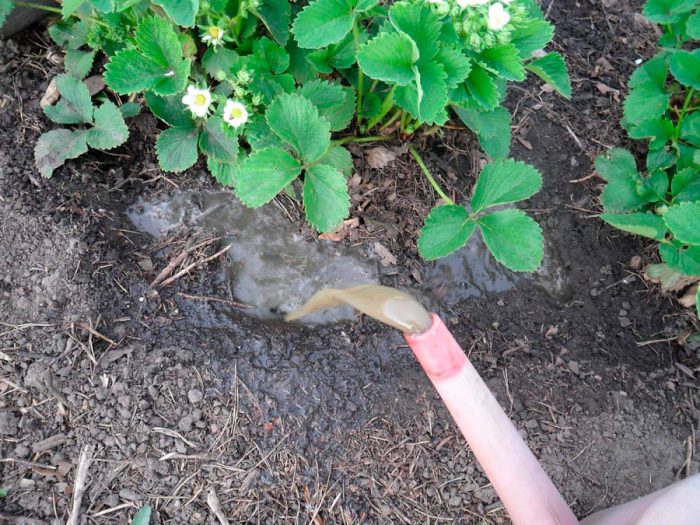
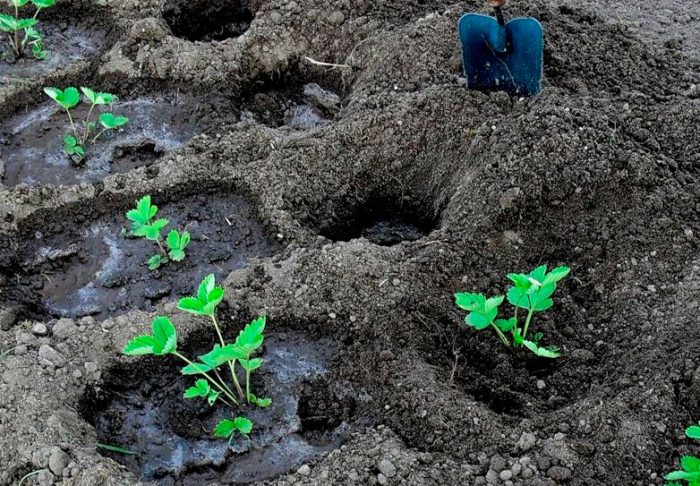


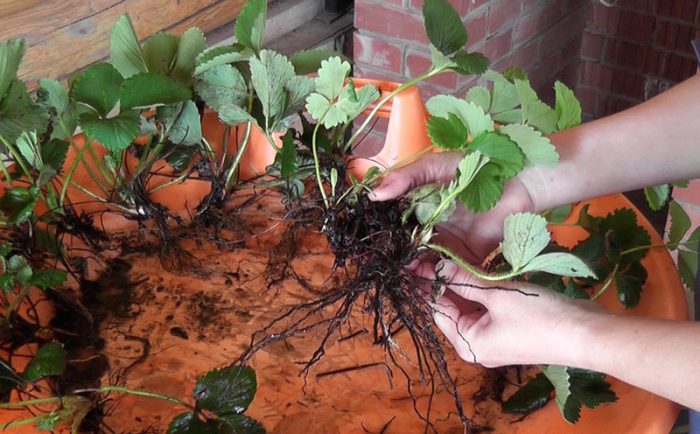


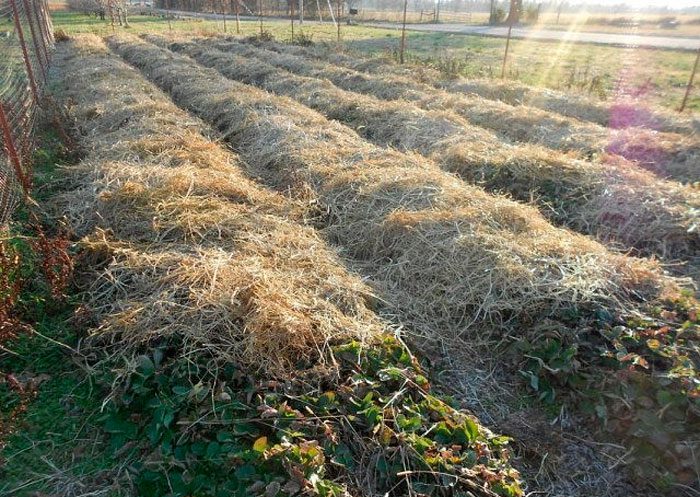
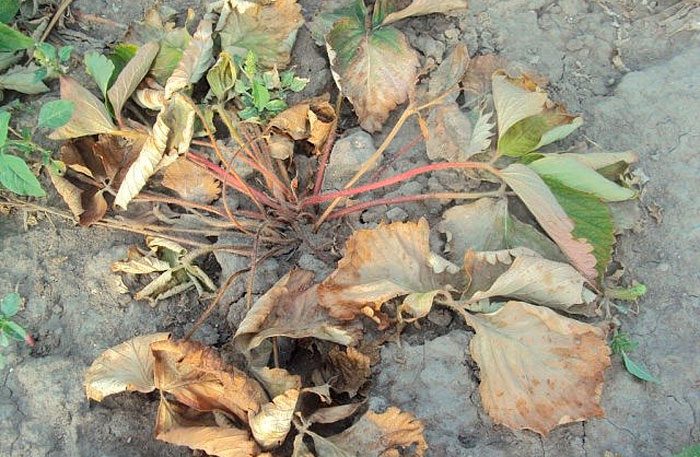
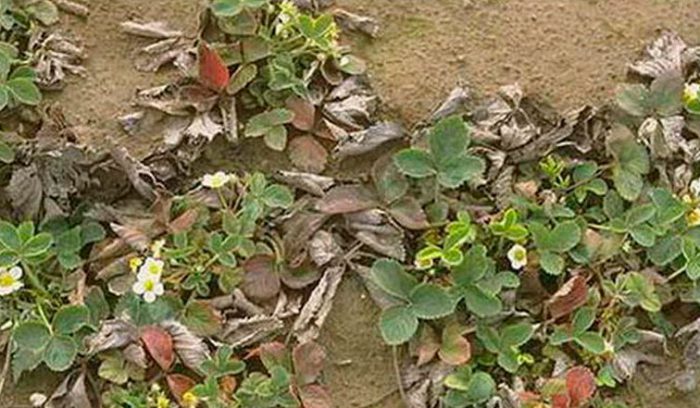

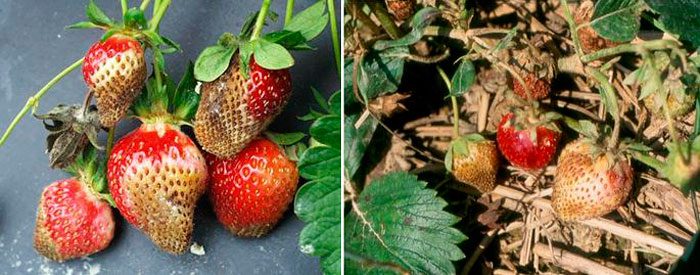

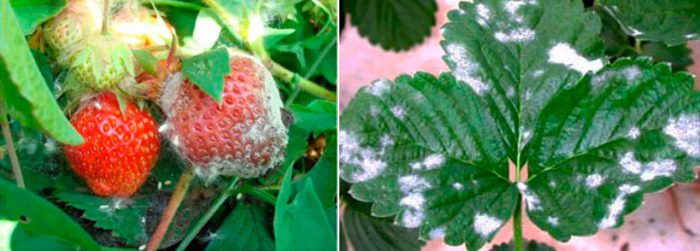
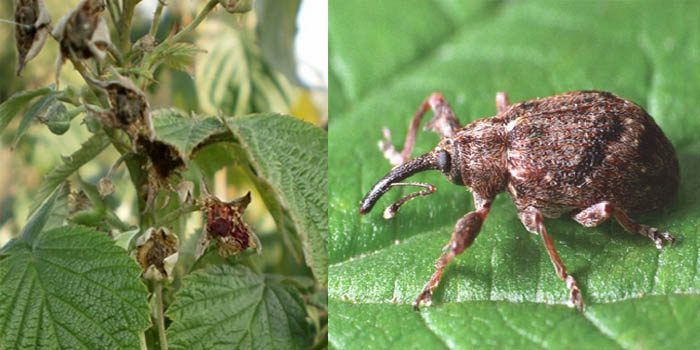

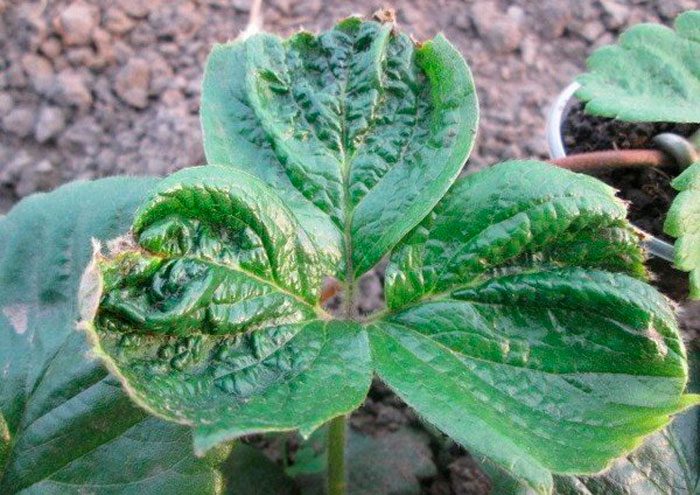


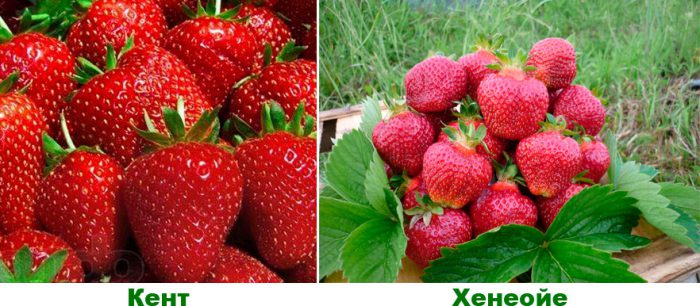

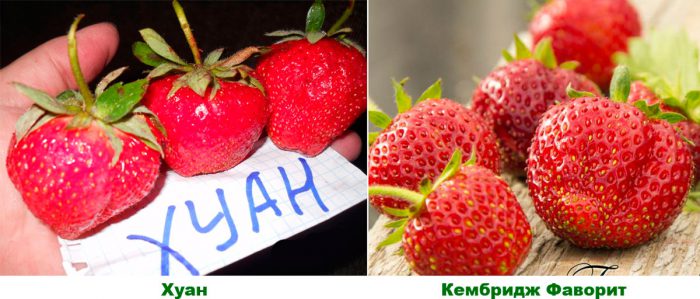

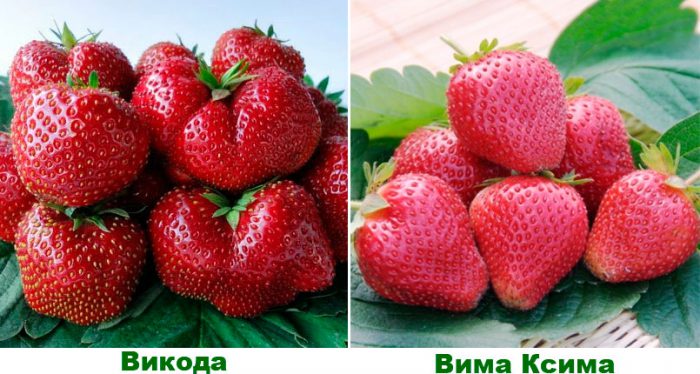

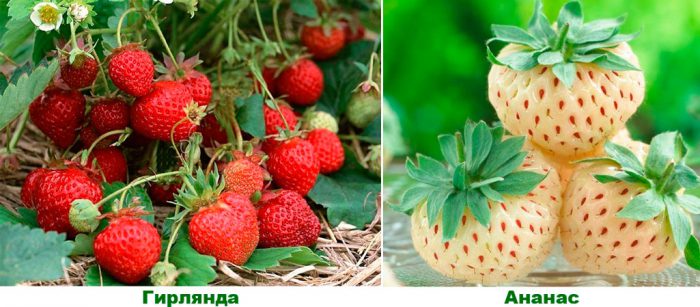




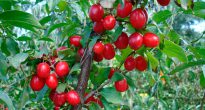
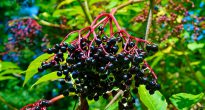


Good article, but there are mistakes.
1. For the landing site to be well consecrated, a priest must be called. (Strawberries need light, not holiness).
2. Planting of small-fruited varieties is carried out according to the scheme of 20x30 centimeters. If large-fruited varieties are planted, then the distance between the bushes in a row is observed from 0.2 to 0.3 m.
So it's the same thing. 30cm = 0.3m. 20cm. = 0.2m.
What is the difference?
Please do not take my comment as an insult to the author / editor ...
Just correct these misunderstandings and the article will be perfect.
Thank!
Seedlings of remontant strawberries came across, they turned out to be very capricious. Somewhere I read that in the forest her root system is protected by phytoncides of other forest plants, but there is no such thing at home and she dies. Artificial illumination with phyto-LEDs helped, but this is not for long.